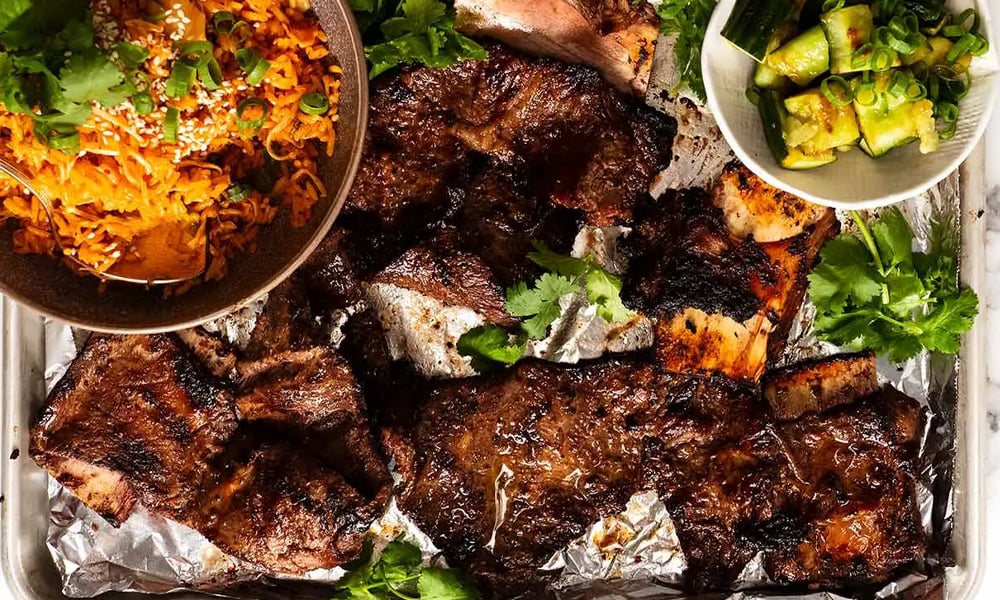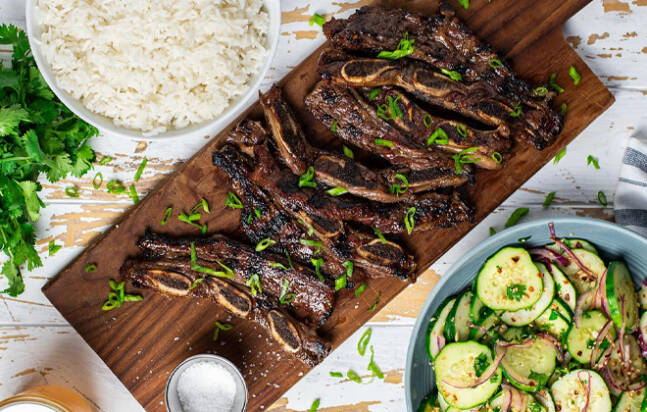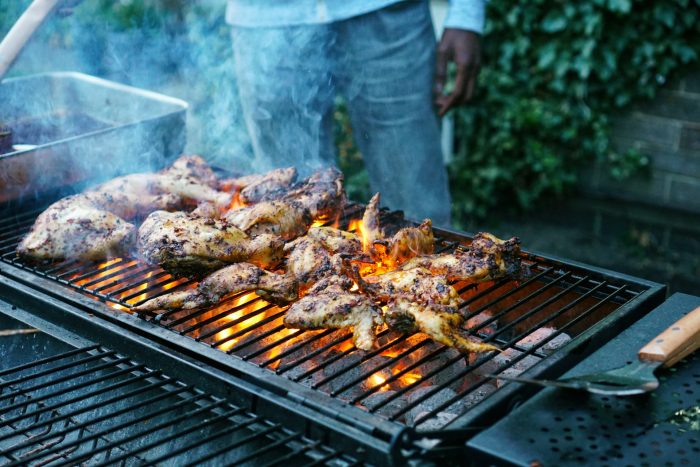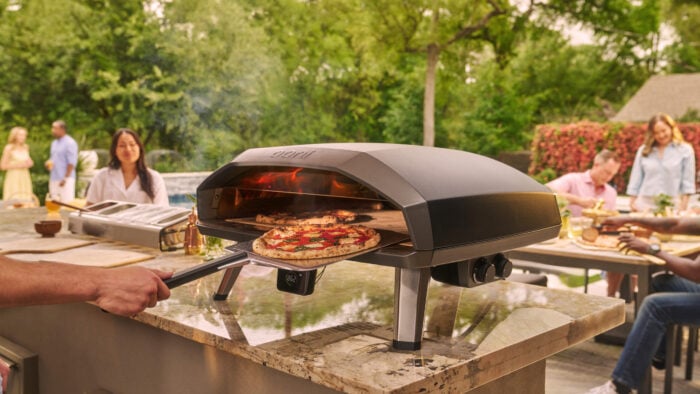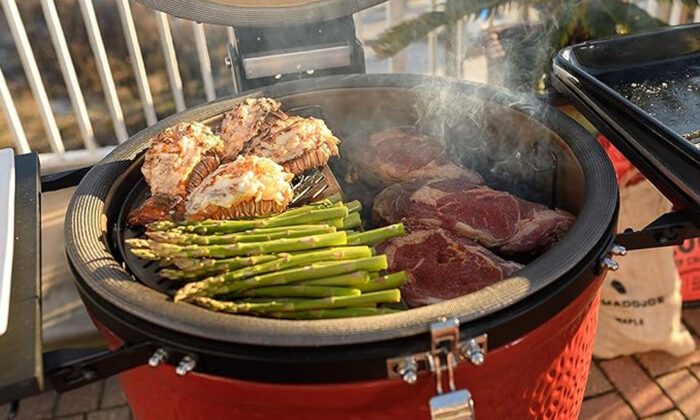Some of my fondest food memories of growing up in the suburbs of Chicago are of my mom’s Korean short ribs, or kalbi. She would marinate the beef for a full day, if not longer, and my father would grill them on our small hibachi in the backyard. The caramelized sugar and cooked fat would result in crispy bits left behind that my brother and I would quickly grab with our fingertips and toss into our drooling mouths. Kalbi wasn’t a staple in our house, but a treat we would enjoy several times a year. Mated with Korean white rice, red leaf lettuce, raw garlic, scallions, and spicy gochujang bean paste, kalbi was a dish we all got excited about. It’s just that damn good.
Our neighbors would smell it cooking on the grill, and they would come by for a taste. Who could blame them? Over the course of decades, I would introduce my non-Korean friends to the unleashed sweet and salty beef flavors and to the satisfying texture of kalbi. I have yet to meet a carnivore who doesn’t love barbecued Korean beef short ribs. Using my mother’s time-tested recipe, I make them for family and friends, who all love them just as I did when I was young. It’s also pretty simple to make in bulk because it cooks very quickly.
What is Kalbi?
Kalbi is a Korean beef dish. Traditional kalbi (which means “ribs” in Korean) is cut in sections along the thick beef rib bone. They measure a few inches long, and the meat is butterfly cut at the top. It can be cooked totally separated from the bone or still attached. This type of cut is hard to find in American grocery stores or at your local butcher’s shop. Then there’s a cut and style known as LA kalbi, which is beef ribeye that’s been cut into slices through the rib bones versus along them.
LA kalbi is a flanken cut and it’s widely available and easier to obtain. You don’t even have to go to the Korean grocery store or the butcher’s to buy it, as many mainstream grocery stores actually carry this cut of ribeye. Each piece measures about 1/2″ thick and between 6 and 10 inches long across the span of three rib bones. Those bones make it easy to hold with your fingertips when eating, and the thin cut means it’s also easy to store when marinating or after cooking. LA kalbi also reheats remarkably well, so don’t be afraid to make a lot all at once.
It’s believed LA kalbi’s origins are in Los Angeles, not South Korea. Specifically, with the Korean immigrant community in the city in the ’70s. The thin flanken cut sold in California has a size and thinness that takes on marinade more easily than the traditional Korean kalbi. The latter is also cut by hand, whereas LA kalbi can be machine cut–meaning it’s cheaper and easier to find. LA kalbi spread like wildfire and became so popular that it made its way back to Korea, where it’s now a staple.
Kalbi Recipe
Ingredients:
- 5 pounds of LA style/flanken cut beef ribeye short ribs
- 1/2 cup of soy sauce
- 1/4 cup of red wine
- 1/4 cup of cold filtered water
- 1/2 cup of light brown sugar or raw honey
- 1.5 teaspoons of fresh ground black pepper
- 10 cloves of fresh garlic
- 1.5 teaspoons of fresh ginger, chopped
- 4 tablespoons of toasted sesame oil
- 1 tablespoon of toasted sesame seeds
- 1 large Asian pear or two ripe bosc pears, peeled and diced
- 1 medium white onion, chopped
- 1 dozen fresh scallion stalks (6 for marinade, set 6 aside for cooking)
Instructions:
1. Before you start marinating the ribs, it’s important to rinse them with off with cold water. This will remove any small bits of bone left from the cutting process. Rinse both sides of each slice under running water. Remove as much excess water as you can so as not to dilute the marinade. Pat them dry with paper towels.
2. In a medium mixing bowl, add soy sauce, water, red wine, honey or brown sugar, and black pepper. Mix. Then, in a blender add pears, garlic, white onion, and ginger until creamy. Add the blended mixture to the soy sauce mix in the bowl, then add the sesame seeds and 2 tablespoons of the sesame oil. Mix again, and make sure there are no clumps of sugar or blobs of honey. Rough chop half a dozen scallions and mix them into the marinade. Your marinade is ready to take on the meat.
3. Get a large roasting pan or a large mixing bowl and place the uncooked ribs inside. Pour the marinade over it with the goal of submerging the meat. Shift the meat around to make sure the marinade is well distributed. Cover the pan or bowl with plastic wrap or aluminum foil and keep it in the refrigerator for at least 24 hours and up to 48.
4. The preferred method of cooking is a charcoal grill, which adds excellent smokiness to the sweet and salty meat. You can also use a gas grill, pan grill them, or broil them in an oven. Chop the remaining half a dozen scallions in fourths and give them a dunk in the marinade for a couple of minutes while the grill heats up. Grill them with the meat, making sure to lay them across the grates so they don’t fall in. Eat them with the kalbi or all by themselves. My mom added those to her recipe, and they’re amazing when they’re grilled slightly crispy on the edges. Cook the kalbi just a couple of minutes on each side, just enough to carmelize the sugar and fat. If the edges are slightly singed and crispy, they’re done.
LA Kalbi is great with just a bowl of short grain white rice and a side of kimchi, but if you really want to go whole hog, you can serve kalbi on red leaf lettuce, along with kimchi, thinly sliced raw garlic, thinly sliced green scallion portions, and gochujang spicy Korean paste that you can find almost anywhere these days. Just cut the kalbi in sections and remove the bone. Place the rice on the lettuce leaf first, then add the gochujang and kalbi. Use small portions of the other ingredients, and then make a lettuce wrap. Wash it all down with a light beer like Kirin Ichiban or Sapporo, and you have the makings of one amazing Korean meal.

